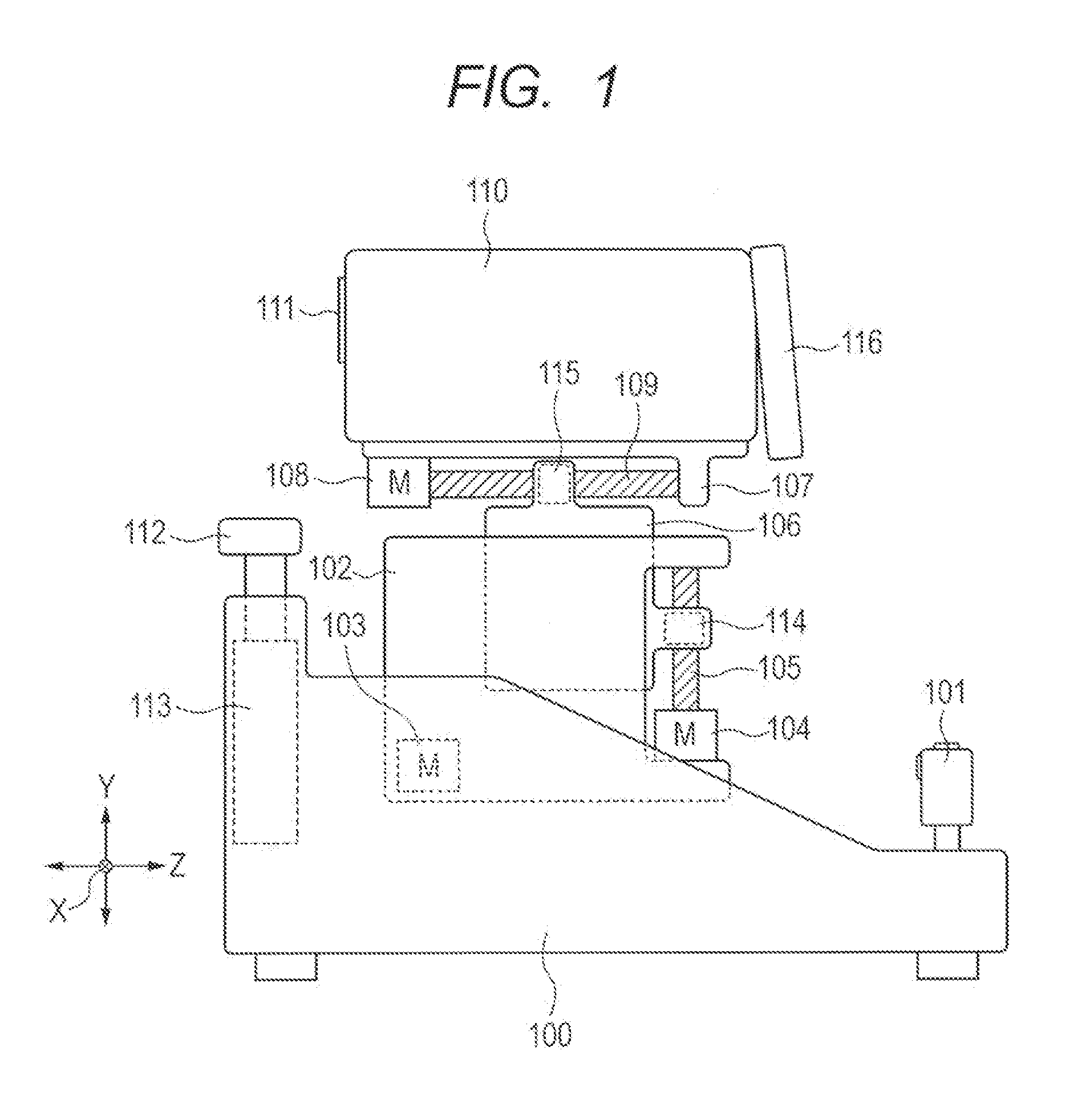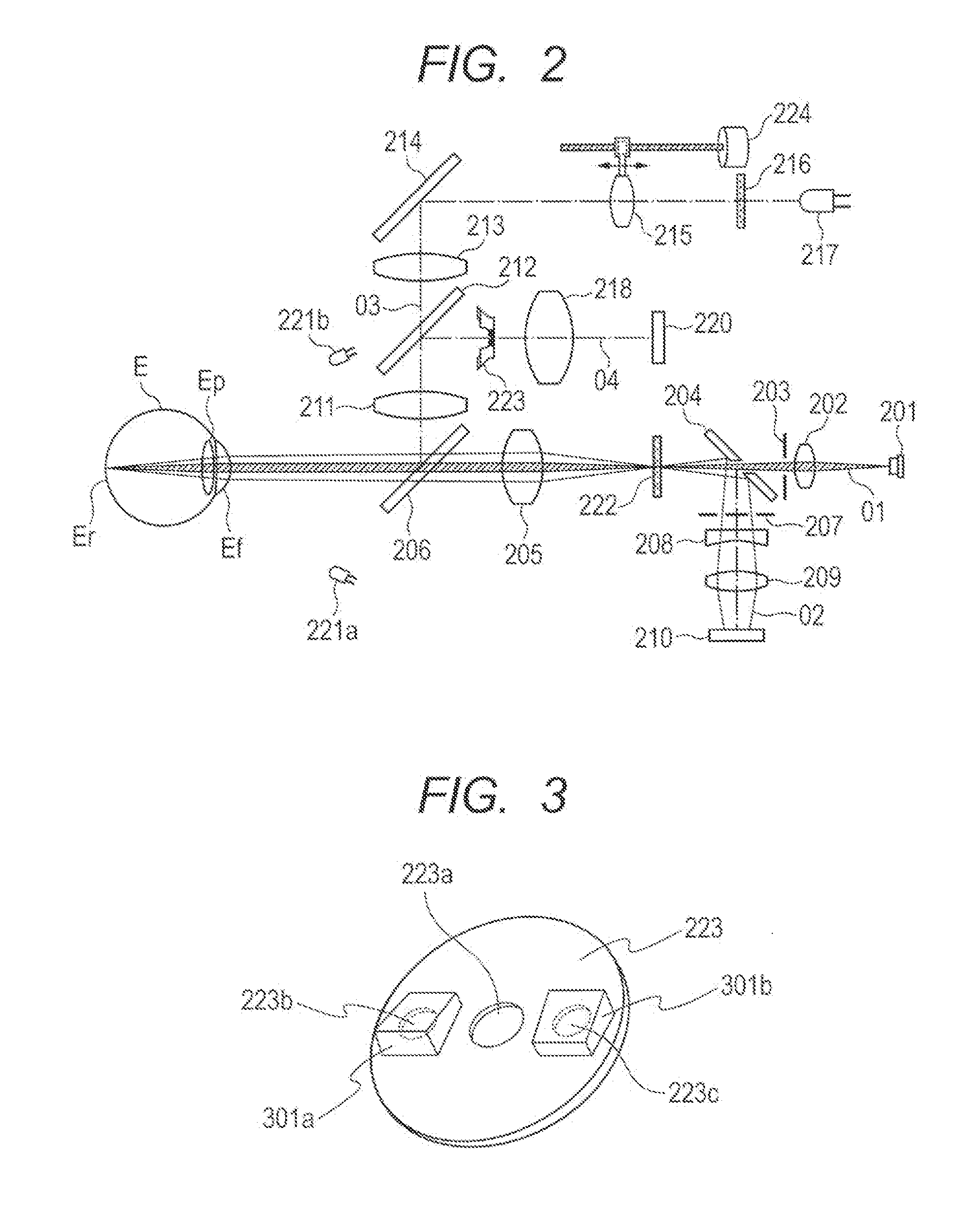Ophthalmologic apparatus and alignment method
a technology of ophthalmologic equipment and alignment method, which is applied in the field of ophthalmologic equipment, can solve the problems of time-consuming measurement and non-normal completion of automatic alignment, and achieve the effect of accurate automatic alignment and reduced measurement tim
- Summary
- Abstract
- Description
- Claims
- Application Information
AI Technical Summary
Benefits of technology
Problems solved by technology
Method used
Image
Examples
first embodiment
[0076]FIG. 6 illustrates the bright spots on the cornea in an IOL-implanted eye. A part of the projection light beam is reflected on the cornea Ec so that a virtual image P is formed by corneal reflection. Another part of the projection light beam that is not reflected on the cornea is reflected on an IOL 601 to form a real image P′. The real image P′ is formed at a position closer to the cornea than the virtual image P.
[0077]FIG. 7 illustrates an image of the anterior ocular segment of the IOL-implanted eye picked up by the image pickup element 220. The bright spots on the cornea are formed as the indices Ta, Tb, and Tc on the image pickup element 220 as described above, and bright spot ghosts on the cornea formed by the reflection on the IOL 601 form indices Ta′, Tb′, and Tc′ on the image pickup element 220.
[0078]As illustrated in FIG. 6, IOL reflection ghosts formed by the reflection on the IOL 601 form images at positions closer to the cornea, and hence the indices Ta′, Tb′, and...
second embodiment
[0094]FIGS. 10A to 10C are anterior ocular segment images picked up by the image pickup element 220 when corneal reflection bright spot images 221a′ and 221b′, which are formed by the extraocular illuminating light sources 221a and 221b, are used for detecting alignment instead of the indices of the bright spots on the cornea, which are formed by the measurement light source 201.
[0095]FIG. 10B illustrates a case where the alignment is performed properly in the Z direction, and an interval d between the corneal reflection bright spot images 221a′ and 221b′ has a predetermined value. FIG. 10A illustrates an anterior ocular segment image when the alignment is improperly too far, and the interval d is smaller than the predetermined value. FIG. 10C illustrates an anterior ocular segment image when the alignment is improperly too close, and the interval d is larger than the predetermined value. Therefore, the alignment status in the Z direction may be determined based on the value of the ...
PUM
 Login to View More
Login to View More Abstract
Description
Claims
Application Information
 Login to View More
Login to View More - R&D
- Intellectual Property
- Life Sciences
- Materials
- Tech Scout
- Unparalleled Data Quality
- Higher Quality Content
- 60% Fewer Hallucinations
Browse by: Latest US Patents, China's latest patents, Technical Efficacy Thesaurus, Application Domain, Technology Topic, Popular Technical Reports.
© 2025 PatSnap. All rights reserved.Legal|Privacy policy|Modern Slavery Act Transparency Statement|Sitemap|About US| Contact US: help@patsnap.com



